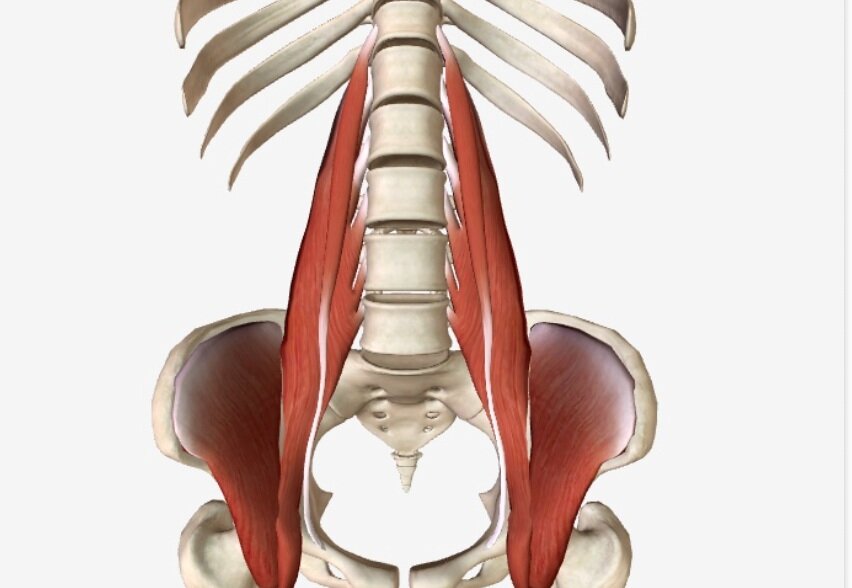The Psoas Muscle: A Key Player in Tension Release
The Psoas Muscle: A Key Player in Trauma Release
The psoas muscle, also known as the "muscle of the soul" or the "hidden governor," is a deep and complex muscle that runs from the front of the spine, through the pelvis and attaching to the thigh bone. It is considered one of the most important muscles in the body due to its multifaceted functions, including supporting the spine, connecting the upper and lower body, and playing a key role in posture, movement, and emotional regulation.
In recent years, there has been a growing interest in the psoas muscle, particularly its connection to trauma release and the impact it has on our physical and emotional health. This has drawn attention to the historical roots of the psoas, and its significance in ancient modalities such as yoga, where it has long been recognized as a powerful center of physical and emotional energy.
The Psoas in Yoga
Yoga has a rich history of recognizing the importance of the psoas muscle and its connection to our physical and emotional well-being. The Sanskrit word for psoas, "Uddiyana," means "to rise up" or "to fly," reflecting the crucial role it plays in allowing us to stand upright, move, and soar.
In yoga, the psoas is considered to be one of the main "subtle energy" centers of the body, with ancient texts describing it as a source of vitality, strength, and emotional stability. This is reflected in many traditional yoga poses, such as Pigeon Pose (Eka Pada Rajakapotasana), which aim to open and stretch the psoas to release stored tension and promote physical and emotional balance.
The Psoas in TCM
In Traditional Chinese Medicine (TCM), the psoas muscle is associated with the Kidney meridian, one of the 12 main meridians in the body. In TCM, the Kidney meridian is considered to be the foundation of the body's energy, and is associated with the emotion of fear. In TCM, the psoas is seen as a critical muscle for maintaining a healthy back, as well as overall physical and emotional well-being. The Kidney meridian is also thought to be responsible for governing the production and storage of essence, or "jing." This essence is said to be essential for the body's overall health and vitality, and it is thought that a strong and healthy psoas muscle can help to support the Kidney meridian and maintain good health.
The Psoas in Ayuveda
In Ayurveda, the psoas is seen as a key muscle for maintaining overall health, as well as for supporting physical and emotional well-being. In Ayurveda, the psoas is associated with the first chakra, or "muladhara," which is associated with the foundation of physical and emotional well-being. The psoas is seen as a critical muscle for maintaining a healthy and balanced first chakra, which is said to be essential for overall health and vitality.
The Psoas and Trauma
While the psoas has long been recognized for its important role in physical and emotional well-being, recent research has shed light on its connection to trauma release. The psoas is known to store tension and stress, particularly in response to traumatic experiences. This is due to its close proximity to the spinal cord and its role in regulating the fight-or-flight response, the body's natural defense mechanism in the face of danger.
When we experience a traumatic event, the body responds with a heightened state of arousal, causing the psoas to tighten and contract in an effort to protect the spinal cord. This protective response is designed to be temporary, but if the traumatic experience is not fully processed, the tension in the psoas can persist long after the event has passed. Over time, this chronic tension can lead to a range of physical and emotional symptoms, such as low back pain, anxiety, and depression.
Releasing Tension in the Psoas
Fortunately, there are several techniques that can help to release tension in the psoas and promote healing from trauma. One of the most effective is Trauma Release Exercises (TRE), a therapeutic modality that uses gentle shaking and vibrational movements to activate the psoas and release stored tension.
TRE works by stimulating the body's natural tremor response, a rhythmic shaking that is believed to be a fundamental aspect of our survival mechanisms. The tremor response is thought to have evolved as a way of discharging excess energy, allowing the body to restore a state of calm and balance.
When the psoas is tightened and contracted, it can interfere with the body's natural tremor response, preventing the release of stored tension. By using gentle shaking and vibrational movements, TRE aims to activate the psoas and stimulate the tremor response, allowing the body to release stored tension and restore balance
